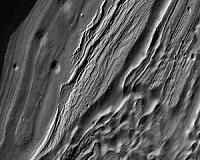 |
Paris, France (ESA) May 11, 2010 The simulated flight to Mars is almost ready to depart! Selection of the full crew is still under way, but the Europeans have now been chosen: Romain Charles and Diego Urbina. Two Europeans, three Russians and one Chinese will close the hatch of the Mars500 isolation modules in early June and start their record-breaking mission. The full crew will be announced later in May, but the European members have already been selected in order to allow them to visit family and friends before they are faced with a 'space mission' that is in many ways even more challenging than launching for real into orbit. Diego Urbina, 26, has Italian-Colombian nationality and a wide experience in the space field. Romain Charles, 31, from France, is a quality manager at Sotira, a company producing composite panels. "I'm really excited and happy having this possibility," says Diego Urbina with a big smile. "But of course I also have mixed feelings and I'm slightly worried about the unexpected things, mainly psychological, that may happen during the isolation. But these are the issues we're most interested in!" During the mission, Diego will keep us posted on the web: "I'm looking forward to having a lot of feedback!" "I am proud of these young men, who are not only brave enough to take part in this history-making experiment, but also who are willingly giving so much their time for the benefit of spaceflight and future generations," said Simonetta Di Pippo, ESA Director of Human Spaceflight. "Mars remains as a goal of the global human exploration programme and Mars500 will provide extremely interesting information about the human side of the future manned missions to our planetary neighbour."
Ultimate experiment The crew will have in the chamber food that shall last for the full duration, and the crew has to manage their consumption accordingly. Communication is only via e-mail and the connection will occasionally be disrupted. It will include also a maximum of 40-minute delay, as on a real Mars mission. They will be monitored and their psychological and physiological parameters recorded throughout the mission. The experiment, as long as a real journey to Mars, will test technologies for extremely long flights, but it is also unique as a test of human endurance.
Like a real spaceflight During the 'surface operations' after 250 days, the crew will be divided, with three moving to the martian 'surface', while the other three remain in the orbiting 'spacecraft' for a month. The landing crew will venture out on the 'Martian' surface wearing modified Russian Orlan spacesuits.
Share This Article With Planet Earth
Related Links Mars500 Mars News and Information at MarsDaily.com Lunar Dreams and more
 New Martian Views From Orbiting Camera Show Diversity
New Martian Views From Orbiting Camera Show DiversityPasadena CA (JPL) May 06, 2010 New images from more than 750 recent observations of Mars by an orbiting telescopic camera testify to the diversity of landscapes there. The images from the High Resolution Imaging Science Experiment camera on NASA's Mars Reconnaissance Orbiter are now available on NASA's Planetary Data System and on the camera team's website. The features visible in the images range from oddly sculp ... read more |
|
| The content herein, unless otherwise known to be public domain, are Copyright 1995-2010 - SpaceDaily. AFP and UPI Wire Stories are copyright Agence France-Presse and United Press International. ESA Portal Reports are copyright European Space Agency. All NASA sourced material is public domain. Additional copyrights may apply in whole or part to other bona fide parties. Advertising does not imply endorsement,agreement or approval of any opinions, statements or information provided by SpaceDaily on any Web page published or hosted by SpaceDaily. Privacy Statement |